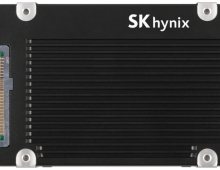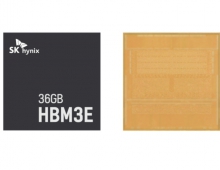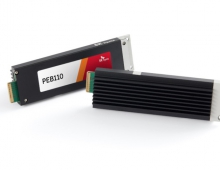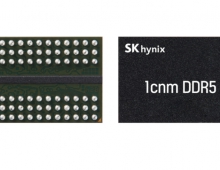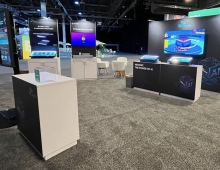
Elpida Develops 1600 Mbps 4-Gigabit DDR3 Mobile RAM
Elpida Memory today announced that it has developed a 30nm
process 4-gigabit DDR3 Mobile RAM (LPDDR3), which achieves a
a data transfer rate of 1600Mbps at low operating voltage of
1.2V.
The new LPDDR3, along with the newly developed low-power
consumption Wide IO Mobile RAM recently announced, enables
Elpida to strongly support the development of next-generation
mobile devices.
LPDDR3 achieves a data transfer rate that is twice as fast as DDR2 Mobile RAM (LPDDR2), the current leading DRAM preference for mobile devices.
Based on a per pin speed of 1600Mbps, a single LPDDR3 device has a data transfer rate of 6.4 gigabytes per second (GB/s) or 12.8GB/s in high-end mobile devices using a two-chip configuration. When compared with LPDDR2 on a same-speed basis, LPDDR3 consumes roughly 25% less power, enabling it to extend the operating time of such mobile devices as smartphones and tablet PCs.
Elpida plans to begin sample shipments of the new LPDDR3 toward the end of 2011. Depending on customer demand, volume production is expected to start in late 2012. Also, two- and four-layer stacking configurations will enable high-density 8-gigabit and 16-gigabit chips to be added the line-up of LPDDR3 products.
Key Features:
Manufacturing process: 30nm CMOS
Memory density: 4-gigabit / 8-gigabit / 16-gigabit
Package: FBGA / PoP (Package on Package)
Data width: x32-bit / x64-bit
Per pin data transfer rate: 1600Mbps (Max.)
Supply Voltage: VDD1: 1.8V, VDD2/VDDCA/VDDQ: 1.2V
Operating temperature range: -30 to 85°C
LPDDR3 achieves a data transfer rate that is twice as fast as DDR2 Mobile RAM (LPDDR2), the current leading DRAM preference for mobile devices.
Based on a per pin speed of 1600Mbps, a single LPDDR3 device has a data transfer rate of 6.4 gigabytes per second (GB/s) or 12.8GB/s in high-end mobile devices using a two-chip configuration. When compared with LPDDR2 on a same-speed basis, LPDDR3 consumes roughly 25% less power, enabling it to extend the operating time of such mobile devices as smartphones and tablet PCs.
Elpida plans to begin sample shipments of the new LPDDR3 toward the end of 2011. Depending on customer demand, volume production is expected to start in late 2012. Also, two- and four-layer stacking configurations will enable high-density 8-gigabit and 16-gigabit chips to be added the line-up of LPDDR3 products.
Key Features:
Manufacturing process: 30nm CMOS
Memory density: 4-gigabit / 8-gigabit / 16-gigabit
Package: FBGA / PoP (Package on Package)
Data width: x32-bit / x64-bit
Per pin data transfer rate: 1600Mbps (Max.)
Supply Voltage: VDD1: 1.8V, VDD2/VDDCA/VDDQ: 1.2V
Operating temperature range: -30 to 85°C

